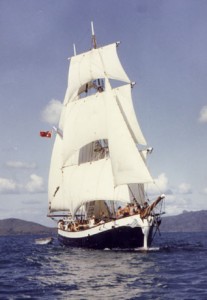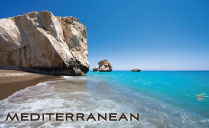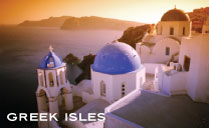Paradise Found by Captain John Borden
Australia’s Whitsunday Islands Part I
20.10 S.Lat / 148.55 E.Lon
 When Captain Cook and the crew of ENDEAVOR set sail in 1770, heading north from Botany Bay, they had placed an inexorable stake in mere faith. It was both faith and imagination that brought James Cook and his three-masted bark to the fertile east coast of the southern continent. While Dutch explorers first reported evidence of Australia’s sprawling shoreline some hundred years earlier, Cook would be the first to chart this fascinating, yet virtually undiscovered country. “There is a reason to imagine,” claimed King George’s appointed commission, “that a continent or land of great extent may be found to the southward.” And with that, his majesty’s royal bark ENDEAVOR threw apprehension to the wind, and went forth.
When Captain Cook and the crew of ENDEAVOR set sail in 1770, heading north from Botany Bay, they had placed an inexorable stake in mere faith. It was both faith and imagination that brought James Cook and his three-masted bark to the fertile east coast of the southern continent. While Dutch explorers first reported evidence of Australia’s sprawling shoreline some hundred years earlier, Cook would be the first to chart this fascinating, yet virtually undiscovered country. “There is a reason to imagine,” claimed King George’s appointed commission, “that a continent or land of great extent may be found to the southward.” And with that, his majesty’s royal bark ENDEAVOR threw apprehension to the wind, and went forth.
There is no modern equivalent of such an unknown left on this earth. To imagine this leap of faith is to look every conceivable possibility in the eye and proclaim, “Come what may!” Fortunately it wasn’t fierce giants or three-headed sea monsters Cook encountered on his voyage north along the Australian coast, but rather a wondrous archipelago of islands. In his log, Cook wrote, “Indeed the whole passage is one Continued safe Harbor, besides a number of small Bays and Coves on each side, where ships might lay as it were in a Bason. The land, both on the Main and Islands, especially on the former, is Tolerably high, and distinguished by Hills and Vallies, which are diversified with Woods and Lawns that looked green and pleasant,” entered June 3, 1770 on the morning of Whit Sunday.
Making my own way north on a bus out of Sydney, over two hundred years later, I had taken a much more modest leap of faith. With only four months left on my visa and very little money left in my pocket, I decided to push my return flight forward to the last possible day. Already used to thinking upside down, the coming of fall in April had me looking north, yearning for warmer climes. Luckily I had become friends with the mate aboard a tall ship headed around the world for Australia’s 200th birthday. Listening to his experiences aboard a charter brigantine based in a group of tropical islands off the Great Barrier Reef’s southern tip supplied ample fuel for my imagination. Having just finished a stint as crew aboard the brigantine ZEBU, I was anxious to sign on with another tall ship based somewhere along the more temperate Queensland coast. After he agreed to send a letter on my behalf, I forwarded my sea credentials and, with the shoes on my feet, a few swim trunks, T-shirts and a warm weather sleeping bag in my pack, I bought a ticket for Airlie Beach, the closest mainland port to Australia’s Whitsunday Islands.
Airlie Beach is a small but colorful resort township. The social hub of the main  strand is the open air bar at Whitsunday Village, a palm-drenched resort landscaped in true Polynesian style. When the sun dips into the blue horizon, three large German fellows take the stage at the village bar. Accompanied only by an old guitar, these brothers joyously resurrect ancient sea shanties with a brutally honest fervor. Their lyrical tales originate from around the globe, which the brothers spanned in several years of painstaking research at a number of tropical bars not unlike Whitsunday Village. The vessel which carried them on this romantic quest was herself resurrected from the past. Built at the turn of the century as a steam launch off Australia’s rugged southeastern coastline, the ship was originally commissioned to service buoys and lighthouses. She was later employed as a pilot boat and even served as a navy training vessel during WWII. After the war she was re-rigged as a fishing ketch, and by 1966 the old workhorse was reduced to nonstop dredging for scallops. When a tragic fire erupted on board in 1968 the craft was burned to the waterline and towed into the shallow mud banks at the mouth of Victoria’s Maribyronong River.
strand is the open air bar at Whitsunday Village, a palm-drenched resort landscaped in true Polynesian style. When the sun dips into the blue horizon, three large German fellows take the stage at the village bar. Accompanied only by an old guitar, these brothers joyously resurrect ancient sea shanties with a brutally honest fervor. Their lyrical tales originate from around the globe, which the brothers spanned in several years of painstaking research at a number of tropical bars not unlike Whitsunday Village. The vessel which carried them on this romantic quest was herself resurrected from the past. Built at the turn of the century as a steam launch off Australia’s rugged southeastern coastline, the ship was originally commissioned to service buoys and lighthouses. She was later employed as a pilot boat and even served as a navy training vessel during WWII. After the war she was re-rigged as a fishing ketch, and by 1966 the old workhorse was reduced to nonstop dredging for scallops. When a tragic fire erupted on board in 1968 the craft was burned to the waterline and towed into the shallow mud banks at the mouth of Victoria’s Maribyronong River.
In 1970, in what can only be described as a miracle, a German visitor had a premonition which would ultimately bring the ship back to life. Intrigued by the classic lines of the hull, the young man actually witnessed a vivid transformation in a dream, where the hull’s wreckage was lifted from the goo and morphed into a magnificent sailing ship gliding far away across the ocean and up the Rhine River to his home town, Cologne, Germany.
Realizing his dream with the help of his two brothers, she was completely refitted as a 110’ brigantine. The wondrous vessel was christened, GOLDEN PLOVER, named appropriately after the tiny shorebird with the greatest migration route of any known species. Accompanied by their closest friends, the three brothers set the GOLDEN PLOVER on her watery flight to their European homeland, only to return to the beckoning shores of eastern Australia. There couldn’t be a more perfect setting for this rare bird than the Whitsunday Islands and no one had a greater awareness of this than a passionate Dutch sailor named John DeVere. In a lease agreement the brothers turned the brigantine over to DeVere’s Coral Sea Line charter company as the only vessel of her kind operating in the Whitsundays. With a crew of 12 and carrying up to 50 passengers, she is to this day a vision to behold. The chance to work aboard her at any capacity was almost too much to hope for. You can imagine my surprise when I arrived at the Coral Sea Line office greeted by John DeVere’s extended hand. “Good, you’re here,” he said matter of factly, “I’ve been expecting you. We need a first mate.”





